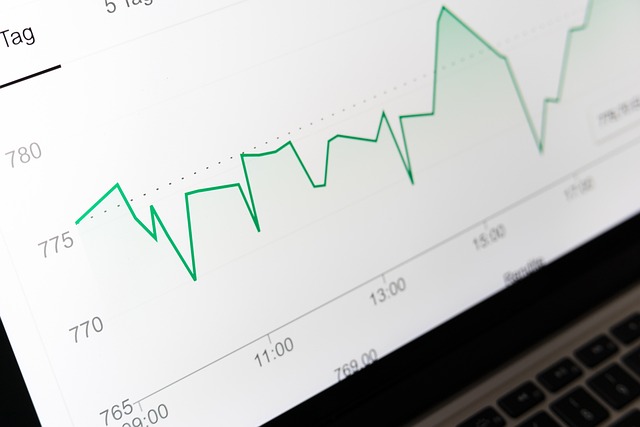Understanding Crypto Market Index and Its Impact
Author: Jameson Richman Expert
Published On: 2025-09-14
Prepared by Jameson Richman and our team of experts with over a decade of experience in cryptocurrency and digital asset analysis. Learn more about us.
The crypto market index is an indispensable analytical instrument that encapsulates the overall health, momentum, and potential future trajectories of the constantly evolving cryptocurrency ecosystem. Unlike the analysis of individual digital assets—which can be heavily influenced by micro-level events such as project announcements, celebrity endorsements, or speculative hype cycles—a well-constructed market index aggregates data across a broad spectrum of cryptocurrencies. This aggregation provides traders and investors with a macroeconomic perspective, revealing systemic shifts, sector rotations, and overarching market trends. Drawing from extensive professional experience, mastering the nuances of crypto market indices can markedly enhance your trading acumen, enabling more informed decision-making, robust risk management, and strategic positioning amid high levels of market volatility. My journey through multiple market cycles has reinforced that a deep understanding of these indices is fundamental to navigating the complex, often unpredictable crypto landscape effectively.

What Is a Crypto Market Index?
A crypto market index functions similarly to traditional stock market indices such as the S&P 500, Dow Jones Industrial Average, or NASDAQ Composite, but is uniquely tailored to the characteristics of digital assets. It is typically a weighted average that reflects the collective performance of a curated basket of cryptocurrencies. These baskets usually include dominant tokens like Bitcoin (BTC), Ethereum (ETH), Binance Coin (BNB), along with a diversified array of altcoins representing various sectors—such as Decentralized Finance (DeFi), Non-Fungible Tokens (NFTs), layer-1 blockchain platforms, and infrastructure tokens.
The weights assigned to each asset predominantly hinge on their market capitalization—that is, the circulating supply multiplied by the current market price. Larger-cap cryptocurrencies exert a more significant influence on the index's movement. However, some indices incorporate additional parameters such as trading volume, liquidity, or investor sentiment metrics to enhance responsiveness and accuracy. For example, the CoinMarketCap All Crypto Index compiles market caps across hundreds of cryptocurrencies, providing a panoramic view of market cap trends, sector shifts, and liquidity dynamics. Similarly, sentiment-oriented indices like the Crypto Fear & Greed Index offer insights into investor psychology—gauging whether market participants are excessively optimistic or fearful—thus serving as valuable contrarian indicators. These indices assist traders in recognizing overarching trends, potential reversal points, and periods of heightened volatility often triggered by macroeconomic news, regulatory developments, or sector-specific events.
How Are Crypto Market Indices Calculated?
Understanding the methodologies behind index calculations is crucial for accurate interpretation and strategic application. The most common approach is the market capitalization-weighted model, where each asset’s influence on the index is proportional to its circulating supply multiplied by its current market price. This method ensures that large-cap cryptocurrencies like Bitcoin and Ethereum largely drive the index's movements, while smaller-cap tokens have a proportionally lesser impact. The index value is dynamically updated in real time, utilizing live price feeds, circulating supply data, and often trading volume or liquidity metrics to adjust weights and reflect current market conditions.
Periodic rebalancing—typically on a daily, weekly, or monthly basis—is employed to keep the index representative of the current market distribution. For instance, the Crypto Market Index 10 (CMI10), which tracks the top 10 cryptocurrencies by market cap, recalculates weights regularly to account for rapid fluctuations. More advanced indices incorporate sentiment analysis, utilizing natural language processing (NLP) algorithms to scan social media platforms like Reddit, Twitter, and news outlets to gauge investor mood—ranging from euphoria to panic. Such sentiment data often serve as leading indicators, providing early signals of potential market moves and heightened volatility.
The Significance of Crypto Market Indices for Traders and Investors
Based on practical experience, one of the primary benefits of market indices is their ability to help traders circumvent impulsive reactions to market noise and short-term price spikes. Cryptocurrencies are notoriously volatile and susceptible to manipulation, micro-events, and hype-driven movements. Instead of fixating on individual coins—often influenced by micro-level factors—observing the broader index trend offers a more reliable gauge of systemic strength or weakness. Rising indices during bullish phases typically correlate with increased buying pressure and investor optimism, whereas declining indices signal bearish sentiment or impending corrections.
Furthermore, indices are invaluable for recognizing market cycles—whether the market is in an accumulation, markup, distribution, or markdown phase. This cyclical perspective enables traders to tailor their strategies accordingly. During sustained upward trends indicated by rising indices, long-term investors might consider dollar-cost averaging or leveraging positional trades. Conversely, during downturns or corrections, focus shifts toward capital preservation, hedging, or temporarily exiting positions to limit losses. Recognizing these phases from index data enhances the ability to align trading actions with broader market dynamics, rather than reacting to short-term fluctuations or hype.

Impact of Market Indices on Trading Strategies
Aligning trading strategies with index signals can significantly improve performance and reduce risk exposure. During confirmed bull markets—indicated by rising total market capitalization or positive sentiment indices—traders can adopt aggressive tactics such as margin trading, futures contracts, or breakout strategies to capitalize on momentum. Conversely, when indices signal a bearish shift—such as a reversal in total market cap or rising fear readings—more cautious approaches are advisable. These include reducing exposure, tightening stop-loss orders, or employing hedging tactics using derivatives or stablecoins.
For example, I have successfully employed trend-following techniques by analyzing key indices like CoinGecko’s Market Index or the overall crypto market cap. Utilizing technical tools such as the 50-day and 200-day moving averages, I could identify promising entry and exit points, thus minimizing emotional biases. Combining these with technical indicators like RSI or MACD alongside index movements provides a comprehensive view of market momentum, facilitating better decision-making. Recognizing the cyclical nature of crypto markets through these indices enables traders to position themselves more strategically, avoiding impulsive reactions driven by short-term volatility or hype.
Tools and Platforms for Tracking Crypto Market Index
To leverage the insights provided by market indices, reliable tools and platforms are essential. Websites like CoinMarketCap, CoinGecko, and TradingView offer real-time data, historical charts, customizable dashboards, and alert systems. These platforms enable traders to monitor multiple indices simultaneously, apply technical overlays, set alerts for specific threshold breaches, and analyze historical performance to identify patterns, support/resistance levels, and potential breakout points.
Additionally, many exchanges develop proprietary indices reflecting their trading activity and liquidity. For example, Binance offers Spot and Futures Indices that capture real-time market sentiment and flow, providing insights into inflows and outflows across different segments. Advanced traders often utilize APIs to connect with analytics tools like Coin Metrics, Glassnode, or Santiment, which provide on-chain metrics, sentiment analyses, and macroeconomic correlations—further enriching their strategic toolkit with granular insights and predictive analytics.
Challenges and Risks of Relying on Crypto Market Indices
Despite their strengths, indices are not without limitations and inherent risks. One major challenge is market unpredictability—black swan events such as regulatory crackdowns, macroeconomic shocks, technological failures, or large-scale whale manipulations can cause sudden dislocations that indices may lag behind or misinterpret. During periods of extreme volatility, indices might generate false signals, leading to poorly timed entries or exits that result in losses.
In lower-liquidity or lesser-known markets, large holders (whales) can disproportionately sway the index, creating artificial movements that do not reflect broader market sentiment. Over-reliance solely on indices, without corroborating technical, fundamental, and on-chain data, can lead to misguided trades. Therefore, I recommend a comprehensive analytical approach—integrating indices with technical analysis, news sentiment, on-chain activity, and macroeconomic indicators—coupled with disciplined risk management practices such as diversification, strict position sizing, and stop-loss orders. This holistic approach mitigates the risks associated with index-based trading and enhances resilience against unforeseen market shocks.

Emerging Technologies and Future Trends
The future landscape of crypto market analysis is being reshaped by advances in artificial intelligence (AI) and machine learning (ML). These technologies excel at processing vast, complex datasets—social media sentiment, macroeconomic indicators, on-chain metrics—and identifying intricate, non-linear patterns often imperceptible to human traders. AI-driven trading systems can generate predictive signals based on trend indices, sentiment shifts, and macroeconomic variables, fostering a more systematic, emotion-free trading environment.
A noteworthy development is the integration of AI with on-chain analytics platforms like Coin Metrics and Glassnode, enabling real-time, predictive insights into market movements. Additionally, ethical and cultural considerations—such as whether Bitcoin trading conforms with Islamic principles—are gaining prominence. Resources like this detailed analysis assist traders in making culturally and religiously aligned decisions. As AI and data analytics evolve, we can expect the emergence of more sophisticated, ethically aware trading frameworks that combine indices, sentiment analysis, and machine learning predictions—fostering more responsible, informed participation in crypto markets.
Conclusion
My extensive experience underscores that understanding and effectively utilizing crypto market indices is fundamental for navigating the volatile and complex crypto environment. These indices act as vital compass points, helping traders avoid impulsive reactions, stay aligned with macro trends, and optimize strategies across different market phases. Success in crypto trading demands patience, continuous education, and disciplined risk management—attributes that are reinforced by a nuanced understanding of indices and complementary tools. Employing multiple data sources—on-chain metrics, sentiment analysis, technical signals—and staying abreast of regulatory and technological developments will further empower your trading journey in this dynamic and rapidly evolving space.
For further deep dives into crypto analysis, technical strategies, and emerging trends, I recommend exploring resources like this comprehensive Bitcoin forecast. Remember, success in crypto trading is a marathon—approach it with discipline, strategic patience, and a commitment to continuous learning to ensure long-term growth and resilience.